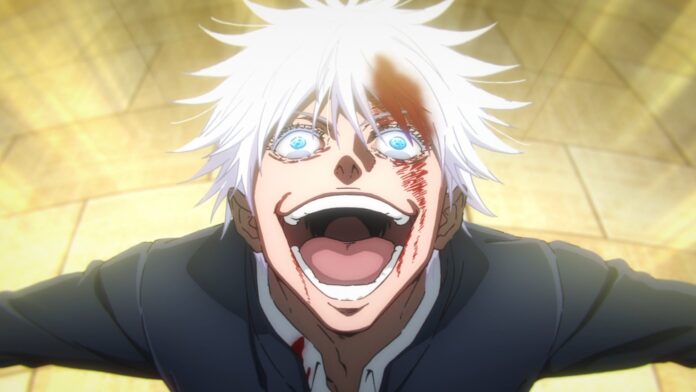The infamous, evermore central, anime studio MAPPA has once again stepped into the spotlight on social media. Rumor has it the animation studio has forced its staff to sign non-disclosure agreements related specifically to working conditions. Meanwhile one of their current projects, Jujutsu Kaisen Season 2, has the animators even apologizing for their work, stating that they were also unsatisfied with the final result. But anime fans know these incidents point towards a bigger issue at hand: anime production scheduling is a nightmare today. And if the industry doesn’t recognize these concerns then it’s only a matter of time before it collapses. So let’s contextualize how we got here and its impact.
The anime community at large has known about the questionable ethics behind MAPPA titles for years. Back in 2021, animator and storyboard artist Ippei Ichii called out low rates proposed by MAPPA for a Netflix project. The producer had suggested a unit price of about $34 per cut despite the resources Netflix has available. According to Ichii, this rate is so low it borders on being cheaper than typical budgets for TV anime. MAPPA responded to this incident with a statement that animation outlets like Cartoon Brew believe “condemns the public discussion of working conditions” through the threat of contract violations.
MAPPA moving to silence complaints is a step in the wrong direction for improving the industry, yet the studio continues to answer with the same lip service promising better work conditions. Meanwhile the Japanese legal system seems biased to favor corporate entities in defamation lawsuits. The drive for non-disclosure agreements regarding work conditions may as well be a natural development in the studio’s initiative to “take firm action”, so to speak. Transparency would be the more ideal way for MAPPA to prove their efforts.
Low wage situations like this result in young animators overworking themselves just to make a living. In 2019, an industry survey from JAniCA revealed that 20 to 24 year olds in animation had an average yearly income of roughly $14,000. This paints a grim view of how underpaid young animators are and explains why it’s difficult for new talent to join the industry. To compensate, you have to work an insane amount of time churning out work you’re unhappy with on incredibly strict deadlines or you can’t afford your rent. And if that work isn’t good enough quality, then anime fans are sure to loudly let them know.
Animator overwork is the direct result of the much larger problem of production scheduling within the anime industry. After all, a big workload would not be so problematic if its scheduling went smoothly. But even self-depictions of the artform, like Shirobako and Golden Boy, show us that good scheduling in TV anime is never truly a guarantee.

Key animator Vincent Chansard expressed his personal experiences with these issues in a French interview. According to him, scheduling for Magia Record was “insufferable”, as they had to finish the layout a week before the episode came out. Whereas on One Piece the layout could sometimes be done two months before the episode airs. Sakuga Blog also touched on the broken state of the pipeline for Magia Record as it aired. “The production is in such disarray that the series has had over 5 delays at this point, all of which have been either partially or completely swept under the rug.” Similar issues were also subtly heard about another SHAFT production, Pretty Boy Detective Club, with more insider nuance.
Animators are important, but it is equally worthwhile to acknowledge that animation directors are the true creative cornerstones of the industry. Directors supervise and make corrections for animators, acting as an institutional way for traditional knowledge to be passed down. In doing so, they harmonize the production and help to partition the bursts of liveliness towards the episode direction. But what happens when these cornerstones end up with scheduling issues? Berserk (2016) was a notorious example of such an adaptation, which desecrated a highly esteemed manga. Its director, Shin Itagaki, explained how much more complicated the animator shortage truly was and its result. To him, bad animation in anime is left as is because bigger companies outbid smaller studios, filling up the production schedules of animation directors. Animation directors typically train animators by design, pushing them to lift heavier weights off the workload. So when there’s less animation directors available, productions suffer.
Last month an article on Sakuga Blog described, in broad strokes, the industry’s structural dysfunction due to its systemic lack of training. The loss of specialized animation knowledge leads to in-betweening or animation direction jobs being lost to 3D models on titles like Gundam Hathaway. Some animators lack draftsmanship basics like perspective or proportions, so they use 3D layouts as technological crutches to survive in the industry. Similarly, industry members like George Wada, CEO of studios Production IG and WIT, are in favor of utilizing AI generated art. This is reflected in the 2023 anime The Dog & The Boy which had its backgrounds created with AI. The making-of credits there hint at how a layout was first hand-drawn for AI to then inpaint over it in the desired artstyle. While one may think it only concerns backgrounds and not the animation, it’s important to realize that genga layouts can just as well be used to inpaint over.
Scheduling issues in the anime industry need to be urgently addressed. These problems fatally cause studios a negative public image, as well as a loss of professional recognition, resulting in a concrete loss of money. Let alone make animators work for the West instead with a better income and work-life balance, especially seeing how socioeconomic inequalities go in the industry. And if animation directors face these issues as the de facto teachers to the rest of the animation staff, it means new animators will never be taught properly. They will have to rely on technical crutches, thus lowering the quality of the artform. This cycle may lead to the loss of hand-drawn animation to both AI and 3D animation. And it all stems from poor anime production schedules and the chain reaction of problems they cause in an industry that keeps growing without a plan.






